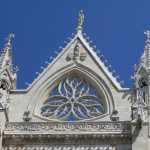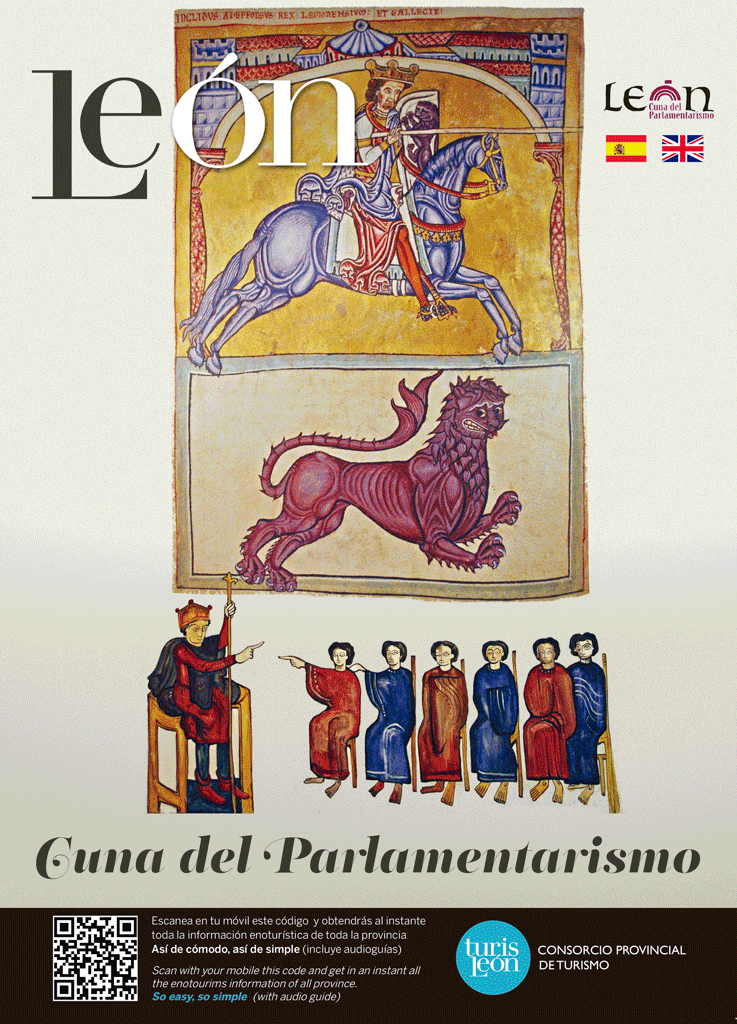CATHEDRAL OF LEÓN
Region: Tierras de León
City: León
The catedral is undoubtedly the city’s landmark, whose history starts in the 10th century. King of León Ordoño II’s royal palace lay on the old terms and public buildings built by the Roman VII Legion (Legio VII) in the mid 2nd century. In the year 917, after vanquishing the Arabs in the battle of San Esteban de Gormaz, the king gave up his residence to show his “gratitude to God”, and letting the first Cathedral be erected in there. Guarded by the Saint Benedict monks, the temple’s structure was very similar to other Leonese Mozarab buildings. Upon his death in 924, King Ordoño II was buried there.
Princess Urraca, Fernando I’s sister, began the construction of a new building, closer to the aspirations of Romaesque Cristianity. It was consecrated on November, 10th 1073. It was made of brick and masonry, with three naves completed with semicircular apses. This cathedral stood until the end of the following century, when the last king of León accessed the throne, Alfonso IX. From then on, the city and the kingdom underwent an important social and cultural shift that resulted in the construction of the current building.
Majestic, robust yet fragile, the new Leonese temple was inspired by the gothic style of the French Cathedral of Reims. Its construction began in the 13th century, and the most outstanding feature of its structure is the towers, displaced from the lateral naves, and fixed to the last part of the central nave through flying buttresses, besides the three splendid façades of gothic imagery.
The floor of the Catedral de Santa María (Saint Mary’s cathedral) is 90 meters long (295 ft), 30 meters high (98ft) and 29 meters wide (95ft). Split into three naves from the entrance to the transept, and expanding up to five naves between the transept and the main altar, the cathedral’s apse is larger than usual. The naves at the cathedral of León are covered with ribbed vaulting in four parts, in rectangular sections.
León’s catedral is widely known for its 130 church windows and three rose windows, the true jewels of the temple: 1800 square meters (19375 sq. ft.) of polychrome stained-glass windows with medieval origins. They are considered among the best in the world, and they fill up the inside with a sweet and colorful luminosity. The most outstanding windows are the great rose window, located between two spires, and the ones at the Main Chapel, the North transept and the Chapel of Saint James. Several motifs can be seen in them: plants, typical Leonese activities, heraldic topics, Saints, kings from the Old Testament and prophets.
The late Gothic choir inside the temple is also remarkable (15th century), built in walnut wood by Jusquin van Utrech, Copin de Holanda and Juan de Malinas. The altarpiece from the Main Altar keeps five boards with scenes about the Virgin Mary and San Froilán. In the ambulatory there lies the tomb of the only king buried in the Leonese cathedral, Ordoño II.
Night lighting
During holidays and weekends (from 12 AM to 2 AM) the stained-glass Windows are lit up from inside, allowing for a special glimpse of the window set.
Platform at the León Cathedral
Fourteen meters high (46ft), sixty four steps split into seven parts and the exceptional view of the Cathedral and its stained-glass windows make up the project El sueño de la Luz (“the dream of light”). For a half hour, visitors can enjoy the spectacular view offered by this platform, located at the Cathedral’s clerestory.
The new organ
León’s Cathedral has had a new organ since 2013, which extends over four arches (unlike two arches for the old organ) and counts with five keyboards and 4334 pipes. It was made by the German organ-makers from the Klais studio, after the musical project by Jean Guillou and the design by the Leonese artist Paco Chamorro. Chamorro was inspired by the Nativity sculptures in the Cathedral’s chapel.
USEFUL DATA
More information:
IMAGES





